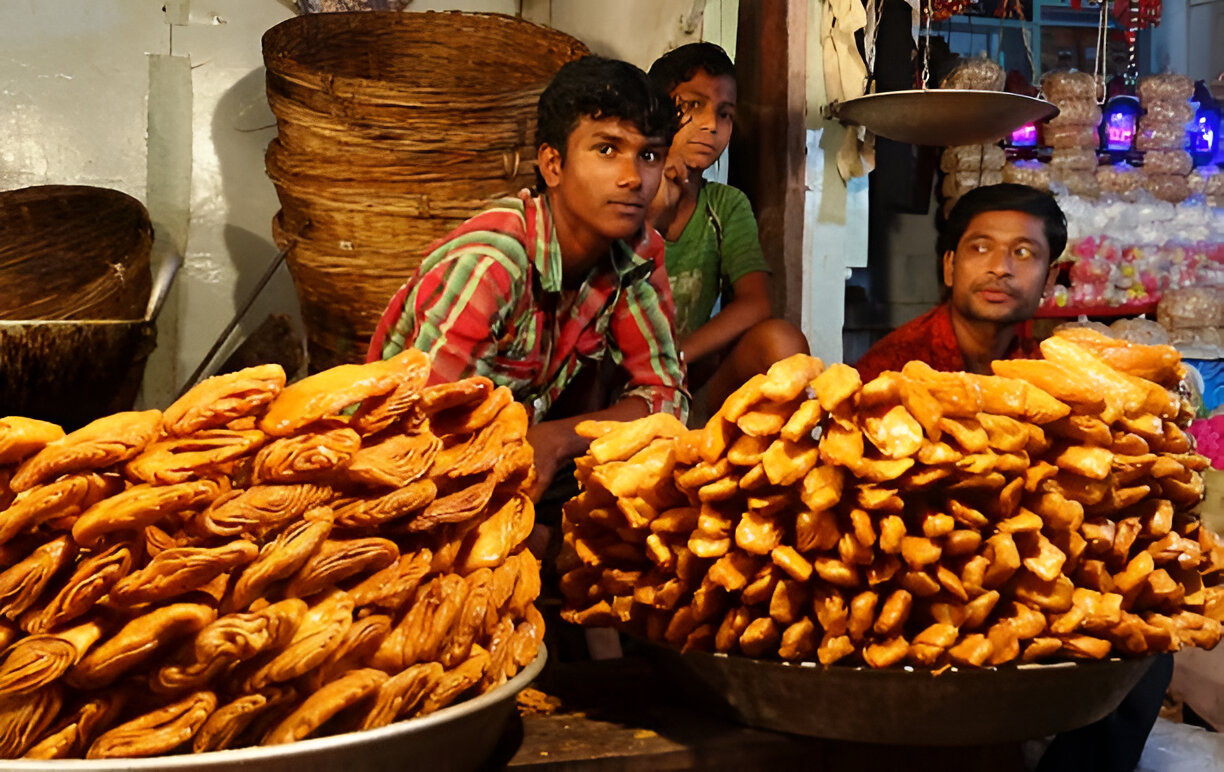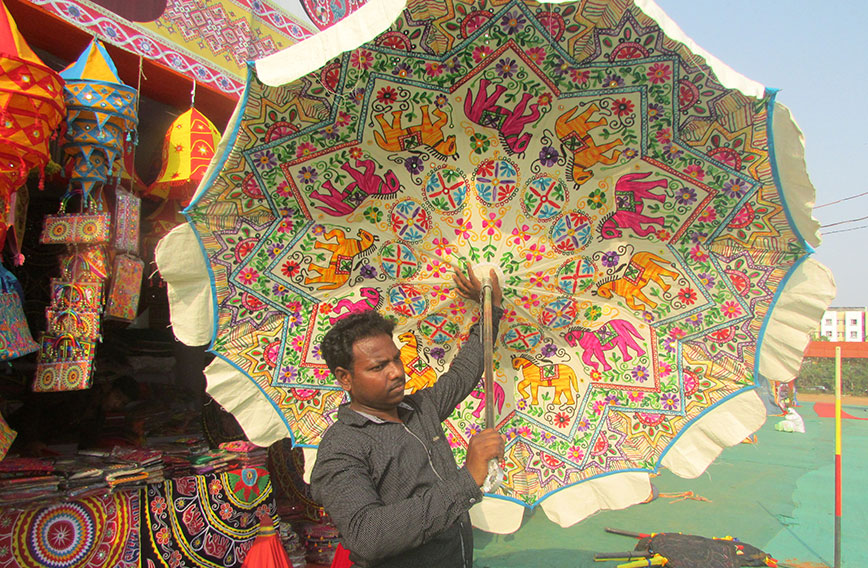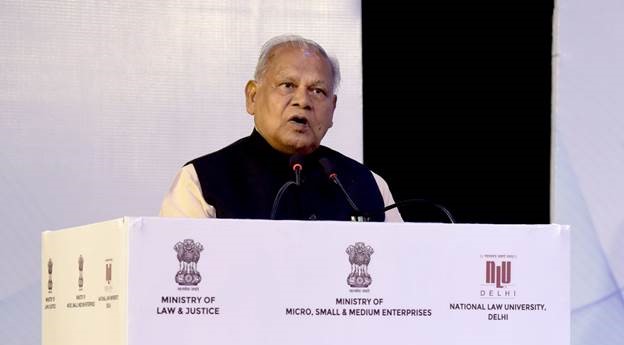In the month of June or July, every year, the divine city of Puri in Odisha transforms from a quiet coastal town into a vibrant sea of faith, color, and commerce. The Jagannath Rath Yatra, one of Hinduism’s most ancient and revered festivals, goes far beyond from just being a spiritual event.
It is more than a divine celebration; it plays a vital role in the region’s economy, making a notable contribution to Odisha’s GDP. This 9-10 day event boosts local businesses, attracts tourism income, and creates employment across multiple sectors.
A Booming Seasonal Business Ecosystem
During the Rath Yatra, Puri undergoes a remarkable economic shift. Usually a quiet pilgrimage town, it turns into a buzzing hub of activity, where every corner, from roadside stalls to tech-driven services, comes alive with business and opportunity.
1. Street Vendors & Informal Economy Thrive
- Supplies on the go: As the pilgrims arrive in large numbers before the yarta begins, thousands of small-scale vendors line the streets, selling food, water, flowers, souvenirs, and religious items
- A Large Chunk of Earnings: For many local vendor, this 10-day window accounts for a large chunk of their annual earnings, which eases the livelihood
- Surge in the Demand of Local Delicacies: During these days, the demand for local delicacies like khaja (a traditional sweet) surges, providing a boost to home-run food businesses and cottage industries

2. An Opportunity for Handicrafts, Handlooms & Artisans
- The Regional Craft: Pilgrims who visit the city during this 10-day divine event take back souvenirs with them in the form of Odisha’s rich crafts like Pattachitra paintings, appliqué work from Pipili, Sambalpuri textiles, and more
- Gateway to Global Opportunity: Artisans receive both direct sales and new bulk orders from retailers and tourists, sometimes opening doors to global opportunities
- Breaking Sales Records: Many state-run and private handicraft outlets report record-breaking sales during the festival
3. Hospitality & Transport Get Supercharged
- Full Occupancy & Spiked Rates: With over 10–12 lakh pilgrims visiting every year, the hospitality sector sees full occupancy as the bookings are done in advance, and hotel rates often spike by 200–300% during the peak period
- Temporary Accommodations & Boosting Incomes: Homestays and dormitories are set up by locals and NGOs that help in creating both income and jobs for the locals
- Increase in Local Transport Services: Cab drivers, three and two-wheelers, and even cycle rickshaw pullers earn significantly more during this period
4. Supply Chains Work Overtime
- Supply of Essentials: Food, water, medical supplies, and essentials are transported into Puri in large volumes
- Spike in Seasonal Contracts: Small logistics operators, cold storage providers, and packaging units see spikes in seasonal contracts.
- Reliance on Supply Chain: From ice factories to tent suppliers, every element of the festival relies on a well-oiled, short-term supply chain that’s both local and agile.

The Emerging Opportunities in Modernization
1. Spiritual Tech
Startups and tech companies are building tools like live-stream platforms, real-time crowd trackers, and GPS-based chariot movement updates. Online stores are also offering “Rath Yatra special” collections, from puja kits to handcrafted foods and festive clothing.
2. Eco-Friendly/Green Business Models
As awareness around the environment grows, there is an increasing use of biodegradable packaging, reusable materials, and low-waste solutions, welcomed by both pilgrims and local sellers.
3. Content & Creative Collaborations
Devotional storytelling is gaining ground on social media. YouTube videos, Instagram reels, and influencer vlogs focused on the Yatra are drawing huge audiences.
At the same time, traditional artists, musicians, and performers are finding new ways to earn and connect with wider audiences through digital platforms.
What Are the Strategic Takeaways?
- The Power of Regional Economies: Jagannath Yatra shows how powerful regional economies can be and how festivals can drive real-time economic value
- Cultural Tourism is a Goldmine: With the right mix of digital and infrastructure support, pilgrimage tourism can become a $100+ billion opportunity for India
- The Faith-driven Commerce: Businesses are now building year-round product lines and services around spirituality, regional pride, and Indian heritage
Global Reach of a Traditional Festival – Key Points
- Celebrated Worldwide: Jagannath Yatra is now observed in global cities like London, New York, and Singapore, thanks to the growing Indian community abroad
- Rising Diaspora Interest: There’s strong demand for spiritual products, rituals, and cultural experiences among Indians living overseas
- Traditional Products Going Global: Items like Ayurvedic goods, ethnic clothing, and handcrafted puja kits are reaching new international markets
- A Symbol of Cultural Pride: The Yatra is becoming a powerful cultural identity marker, showcasing India’s heritage on a global stage
- Digital Platforms Extend Reach: Online content, virtual darshans, and live updates are helping people across the world connect with the festival
The Jagannath Yatra clearly shows how faith can drive economic activity. It brings people together, supports jobs, keeps traditional crafts alive, and opens doors for modern businesses. For business leaders and decision-makers, it’s a strong example that in India, culture is not just about the past; it’s a powerful engine for growth and opportunity.
Read More: India Crosses 1.8 Lakh DPIIT‑Recognized Startups: A Landmark in Innovation























